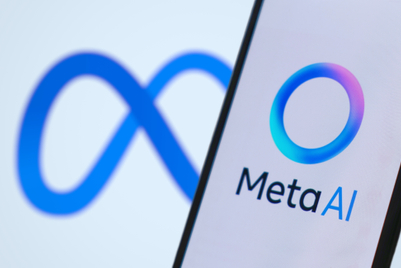
Dole gave an AI (artificial intelligence) named Albert total control of a digital campaign promoting canned fruit cocktail in the runup to Christmas in the Philippines. The project indicated that AI-driven campaign automation is capable of driving sales increases through bricks-and-mortar retail locations, and Dole now plans to expand its use of the technology.
According to Dole and Adgorithms, the maker of Albert, the campaign:
- Blew through its primary KPI in half the allotted time
- Led to temporary sellout conditions in some stores
- Drove an 87 percent increase in store sales once stocks were replenished
- Garnered the brand 60,000 additional Facebook followers.
The experience left Ashvin Subramanyam, VP for marketing and innovation at Dole Packaged Foods Asia, speaking in somewhat reverent tones and sounding like a true believer in the power of AI.
"It's going to light a fire under the backsides of many people in the ad world," he told Campaign Asia-Pacific, "It is going to completely rupture the model."
Modest goals
The fruit-cocktail campaign was only a small pilot project. "I'm a big believer in the fact that media in the consumption space is moving heavily to digital, and I was obviously very open to testing new ways of marketing," Subramanyam said. "So we decided to test Albert out on a pilot for a particular business challenge that we had."
Specifically, Dole wanted to raise awareness and sales for an 822-gram can of its fruit cocktail, because the smaller variant is more profitable than a more popular, larger package. The campaign began on 1 November and ran through New Year's Eve, because fruit cocktail is a common ingredient in dishes that are favoured in the Philippines for holiday celebrations.
A small Manila ad agency, RadManila, was on tap for creative services. The thrust of the creative was to provide recipes and encourage the use of the smaller can for more intimate festive moments, rather than just the biggest family feasts on holidays.

"We set a starting KPI of getting at least 30,000 likes," for a campaign-specific Facebook page, Subramanyam said. "Clearly, we had no idea what Albert is capable of doing, because in the span of eight weeks, the number of likes on that Facebook page got to 60,000." For context, the main Dole Philippines Facebook page, which has been up and running for two and a half years, has just under 200,000 likes.
More importantly, Subramanyam is convinced the AI's actions led to stock shortages in many locations within two weeks of the campaign kickoff, and he believes the verified 87 percent uptick in sales through one retailer was typical. "Looking at what ad hoc observations across other accounts have been, I'm pretty confident that we were probably at that same level if not higher at other accounts. So honestly, from our side, I was shocked—in a positive way."
Tireless trying
An AI's secret weapon in this application, compared to human-run campaigns, is its ability to rapidly execute tests of different combinations of audience and creative across multiple channels to determine what works best, and then optimise based on what it learns.
"You give it the target, and you let it manage the budget as well," Subramanyam said. "And then what it does is it automatically bids, buys, places, and optimises all of the creative materials that you give to it."
It behooves a company to create lots of raw creative materials for the AI to play with. "The more creative options that are thrown at it, the better it is able operate, because it's constantly optimising between different creative choices based on how users are interacting with the material," Subramanyam said. "It also has ability to watch the overall digital space to see what other players are doing, potentially competitor players. It watches how others are bidding, and whether those bids are garnering results for that other player or other brand, to the detriment of our brand. And therefore it also takes into account those learnings as it bids."
And of course, as a robot, an AI never stops working.
"Because it is real-time optimising, we don't have this aspect of making a buy, understanding the impact, doing some kind of manual analysis, and then going back and applying the learnings from that manual analysis. It's an automated, autonomous, digital optimiser. It's constantly optimising—every minute, every second."
(Main article continues below)
|
AI campaign automation Here is some detail on Albert's capabilities and specific actions in the Dole campaign. It's worth noting that the tool is one of many available AI products addressing customisation and automation of digital campaigns. Others playing in the same or similar space include Appier, Kahuna, Sentient, Emarsys and Boomtrain. Albert can create user segments based on:
Based on its incessant testing, Albert can:
Example actions that Albert took during Dole's campaign, according to Adgorithms:
|
Offline impact
One of the more interesting aspects of the Dole campaign is that it lacked an ecommerce sales channel, but nonetheless made a clear impact on sales. Companies often use Albert and his ilk to optimise sales for an online retailer, and in such cases the AI gets direct access to data on every aspect of the online path-to-purchase, including sales. In Dole's case, the retail response was more or less a blind spot, although Dole did provide Albert with weekly numbers from one retail partner.
Nonetheless, the AI's efforts to maximise clickthroughs and achieve its only official KPI (the 30,000 Facebook likes), paid off in revenue terms, according to Subramanyam.
Albert delivered 1.7 times better ROI than in-store tactical displays, according to a third-party analysis Subramanyam commissioned. A dollar spent on tactical displays yielded 89 cents of revenue, but a dollar spent on the online campaign orchestrated by Albert delivered $1.51, he said.
"I'm pretty confident that as we work more with the tool, it will keep getting better and better," he added. "So 1.7 as a starting point is still very remarkable."
Looking ahead, Subramanyam said he will work to feed Albert more data. "The tool works much better with real-time sales info," he said. "I think one of the learnings now is for us to convince our retail customers to be less protective about the point-of-sale data, because clearly, the more data we share with Albert, the better the impact is going to be."
This will be a challenge, as retailers tend to consider such data a point of leverage as well as a revenue stream. But that status quo may be about to shift—like so many others—as AI gathers steam.
|
Previously: This lingerie brand replaced its agency with AI and will never go back  |




.jpg&h=334&w=500&q=100&v=20250320&c=1)
.jpg&h=334&w=500&q=100&v=20250320&c=1)
.jpg&h=334&w=500&q=100&v=20250320&c=1)


.png&h=334&w=500&q=100&v=20250320&c=1)
.png&h=334&w=500&q=100&v=20250320&c=1)






.jpg&h=268&w=401&q=100&v=20250320&c=1)
.png&h=268&w=401&q=100&v=20250320&c=1)


